Coffee roasting seminar | what is underdevelopment and overdevelopment? How to judge the baking degree?
Professional coffee knowledge exchange more coffee bean information please follow the coffee workshop (Wechat official account cafe_style)
Front Street Coffee Costa Rica Coffee | Costa Rican Angel Manor Global only 85 kg | Rose Summer 2018-Panamanian Jade Manor Red Standard Solar | Blue label washing | Green label Solar
Coffee roasting is a professional job, a lot of data control will study a champion's curve, and then find a way to copy, but even if the baking curve is very close, but the flavor? The editor has seen a lot of roasters who rely on a lot of experience and intuition to roast coffee beans, rather than just looking at the data and curves.
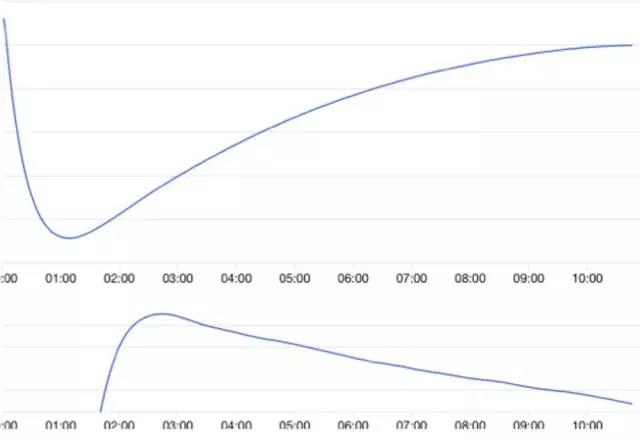
"so perfect curve?"
Indeed, the ultimate goal of baking coffee is to have a good cup of coffee, not a good number. The curve is to provide a reference to tell newcomers how the coffee bean behaves during the roasting process, but in the end, it has to be judged by the evaluation of flavor and taste, just as a coffee is a "golden cup extract" and it is "correct". But it's not necessarily "tasty".
Back to the point, today we talk about what is meant by "underdevelopment" and "overdevelopment". There is no easy way to judge these two cases only from the baking curve.
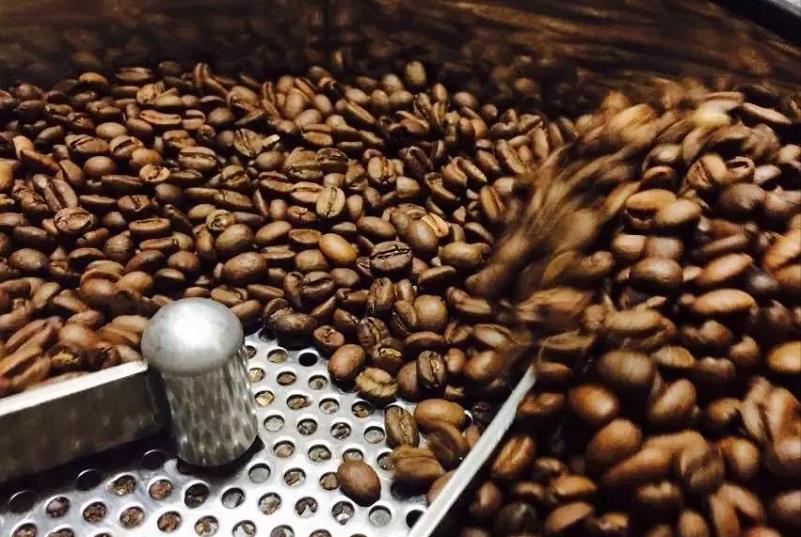
First of all, let's take a look at the underdevelopment.
Underdeveloped coffee beans are generally lightly roasted, with grass, vegetable and toast flavor, that is, the beans are hastily put down before the baking has a good flavor. This usually occurs when the temperature drops suddenly after an explosion, or it is baked at a low temperature for a long time after an explosion. From the appearance of beans, the middle line of underdeveloped coffee beans will have black wrinkles, do not stretch, and there will be a tingling sensation on the tip of the tongue and 2 sides (insufficient chlorogenic acid degradation).
Solution: observe with your eyes-such as washed coffee beans, the middle line should be fully spread, and the silver skin should be relatively clean, the color should be uniform, this is a very good way to judge. Smell with your nose-the smell of undeveloped coffee beans during roasting will be grass-green rather than fragrant. The last thing is to avoid a sharp drop in ror (temperature rise) after an explosion or deliberately stretching too long to bake.
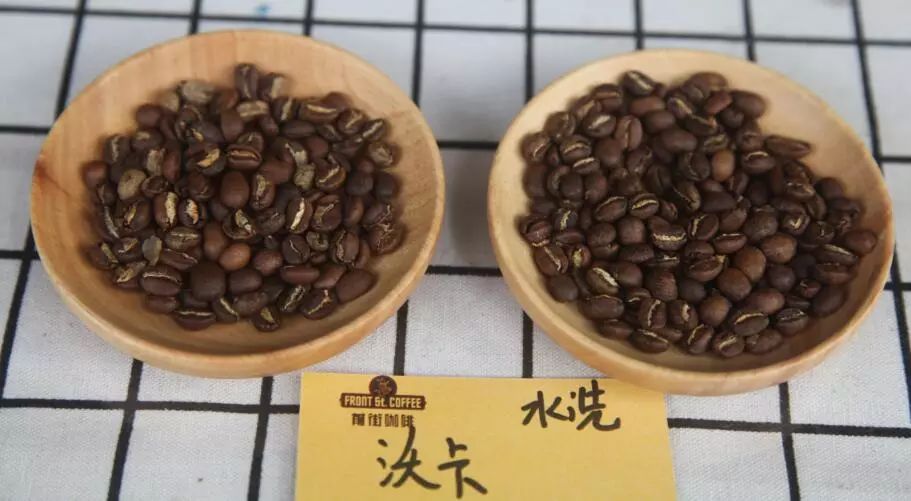
The picture above shows underdevelopment on the left and well-developed coffee beans on the right.
Then let's talk about overdevelopment.
There are two meanings of overdevelopment, one is baked too deep, the flavor has been burned out, leaving only bitterness. This is common in many "charcoal-roasted coffee" and is often found in coffee beans baked to oil. So will baking be overdone if it is not deep? Of course it will.
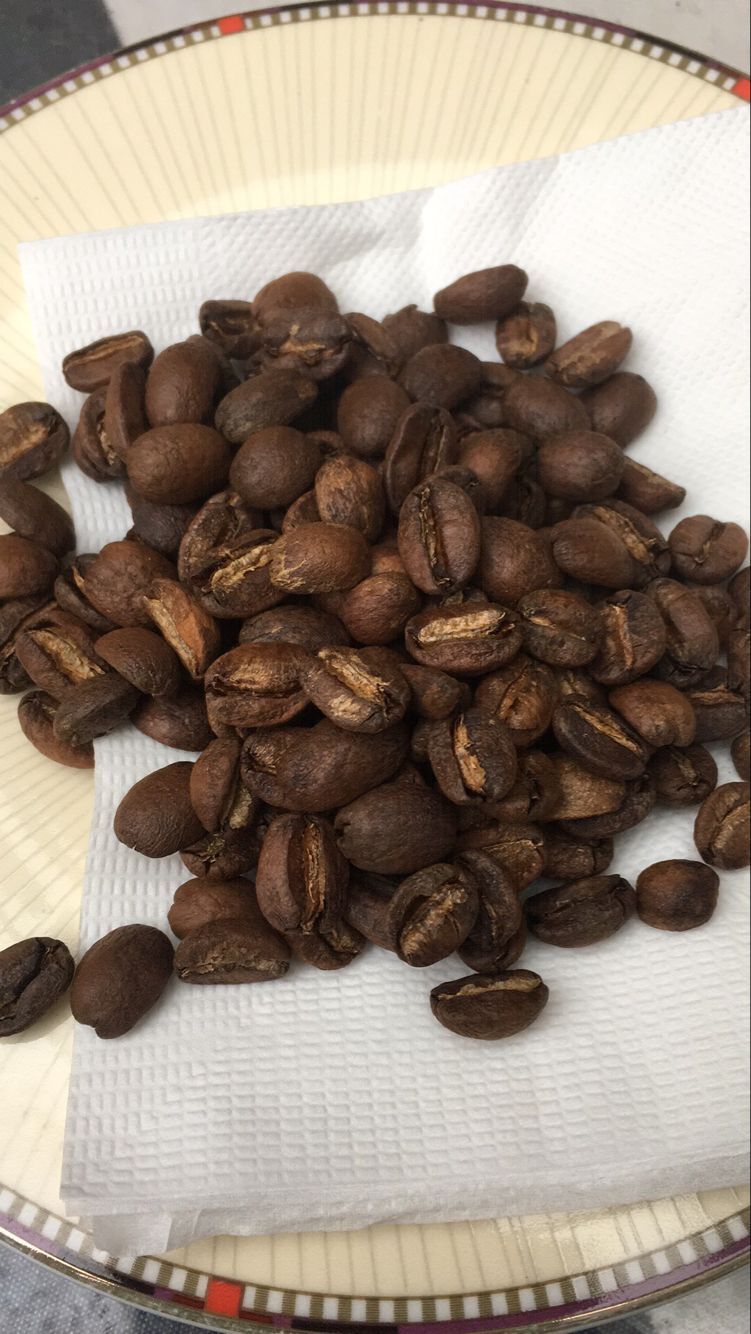
The picture above shows the overdeveloped coffee beans. Does it look like the beans are underdeveloped and the bean table is dry, but its midline has been fully opened, which is one of the manifestations of overdevelopment.
The coffee beans which are not roasted deeply but are overdeveloped are caused by the loss of flavor caused by the development time in the late stage of the explosion. The main taste is roasted grain, plain flavor, roasted flavor, light coffee color and greasy taste in the entrance (not BODY mellow, pay attention to distinguish)
Solution: the main solution is to observe the beans stretch after an explosion, identify the smell by sampling, achieve the expected aroma, and decisively put the beans (which requires empirical judgment), rather than baking them in a temperature range, so as to avoid the problem of overdevelopment. In addition, beans from some producing areas, such as Panamanian Pokuit coffee beans, especially cannot be developed for too long after an explosion, and observation stretching does not need to be fully developed, otherwise the bean core color will be darker than the bean surface color, that is, it will be overdeveloped, and the flavor will be worn off and turned into plain coffee.
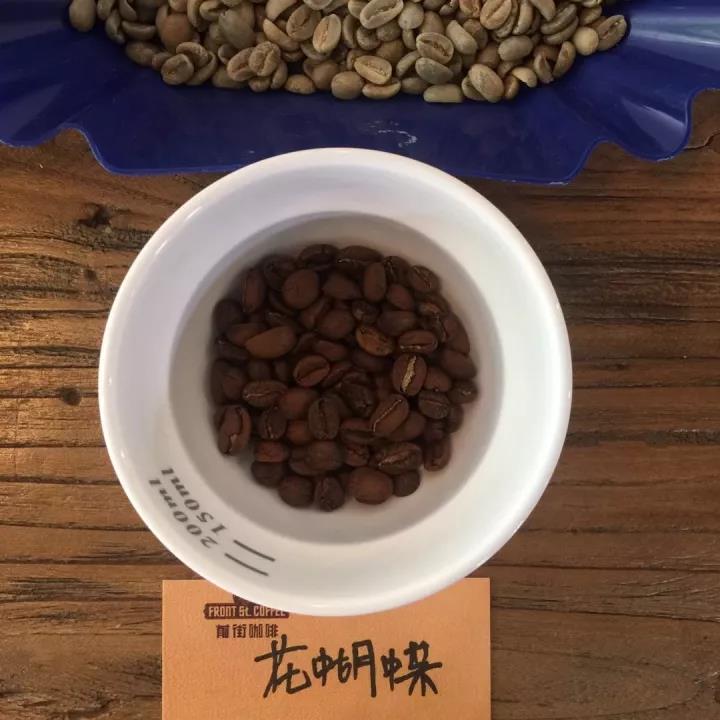
Like a bean like a butterfly, it's normal to wrinkle.
Finally, roasting coffee beans need to be roasted from the raw bean species, planting environment, treatment, moisture content, water activity and many other aspects to develop the baking method, and then after many adjustments and cup tests to find a better flavor of roasting (which includes the baker's subjective preference). If you are a competition, a good-looking baking curve may only be "fairly accurate" and "not too bad" in the eyes of the judges, but if you want to taste good, you should finally determine the flavor of coffee through cup testing and brewing. The quality of raw beans is particularly important (and storage conditions). As a baker and barista, the ultimate goal is to show the best characteristics of a coffee bean, rather than deliberately changing it (whether it can be changed or not).
Important Notice :
前街咖啡 FrontStreet Coffee has moved to new addredd:
FrontStreet Coffee Address: 315,Donghua East Road,GuangZhou
Tel:020 38364473
- Prev
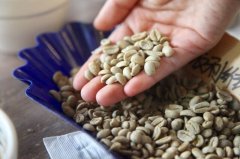
Activity of coffee raw bean water | how to protect coffee from excessive water activity
Professional coffee knowledge exchange more coffee bean information please follow the coffee workshop (Wechat official account cafe_style) front street coffee Costa Rica coffee | Costa Rica Angel Manor global only 85 kg | Rosa 2018 Panamanian Jade Manor Red Standard Sun | Blue Standard Water washing | Green Standard Solar for a long time, people have known about food corruption and moisture content in food.
- Next
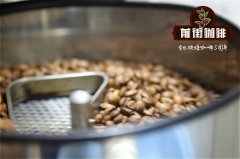
How to adjust the flavor baking without changing the baking degree has anything to do with the flavor?
Professional coffee knowledge exchange more coffee bean information please follow the coffee workshop (Wechat official account cafe_style) Today we are going to talk about energy, and through this perspective to study how to adjust roasting. Energy energy in ancient Greek means activity, operation, is an indirect observation of the physical quantity, is regarded as one physical system to do work on other physical systems
Related
- Beginners will see the "Coffee pull flower" guide!
- What is the difference between ice blog purified milk and ordinary milk coffee?
- Why is the Philippines the largest producer of crops in Liberia?
- For coffee extraction, should the fine powder be retained?
- How does extracted espresso fill pressed powder? How much strength does it take to press the powder?
- How to make jasmine cold extract coffee? Is the jasmine + latte good?
- Will this little toy really make the coffee taste better? How does Lily Drip affect coffee extraction?
- Will the action of slapping the filter cup also affect coffee extraction?
- What's the difference between powder-to-water ratio and powder-to-liquid ratio?
- What is the Ethiopian local species? What does it have to do with Heirloom native species?

